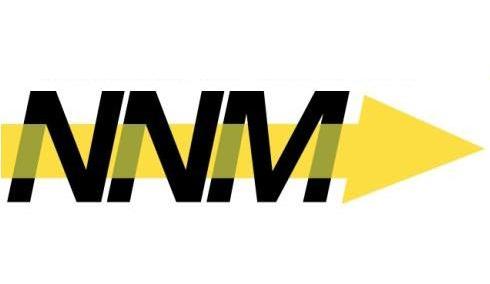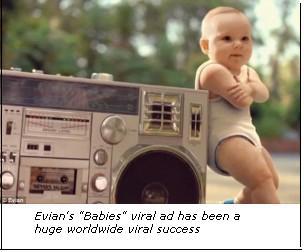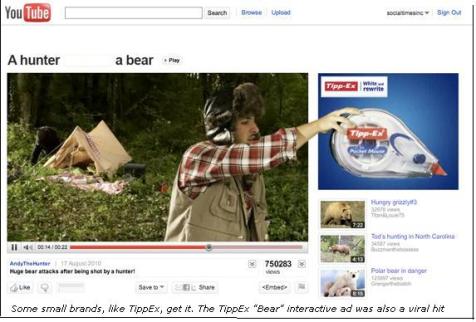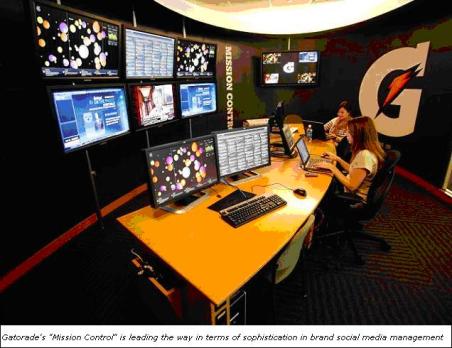NNM: In Social Media, Small Brands Need to Think Smaller - Brian Sheehan - MediaBizBloggers

Social marketing is a hot topic today in companies, big and small. Marketers are trying to figure out how to do it, how to do it well, and how to measure whether the results are worth the trouble.
If we have learned one thing about the impact of the Internet on marketing, it is that the web has lowered the entry cost for marketing small brands. In the pre-web days, unless you had a budget big enough for expensive mainstream ad vehicles, like TV, print or radio, it was hard to reach a significant audience with your message. Big marketers had a built-in advantage, and the big got bigger at the expense of the small. The emergence of the web, and especially social marketing, now means the highway to success now has many more "on ramps" for smaller companies.
So why is it, when we look at some of the most potentially effective forms of social marketing, big marketers are vastly out-performing smaller ones?
The dominance of big marketers is in many ways a straightforward matter of resources. For example, PepsiCo's Gatorade has a group of full-time staff who man their "Mission Control" room, monitoring and participating in social media 24 hours a day. Smaller brands may not be able to afford that.
The resource disparity is exacerbated by the sheer complexity of the new media space. Ironically, small brands were seen to have the advantage of being more flexible and nimble, better able to jump on new opportunities. However, with the myriad new social connections available, only big marketers and big media companies have the scale to experiment with all of them to decide which ones work best, and how they work best.
Surprisingly, it is not just in the realm of scale and resource levels that big brands shine. It is in the realm of ideas. When we look at big ideas that don't require tons of resource, just creative thinking, big brands like Ford stand out. In fact, they stand way out. Ford's Fiesta launch was a masterpiece of simple, powerful ideas. They gave their product to 100 socially vibrant 20-somethings, who were required to chat, blog, tweet, YouTube, etc. about their experiences. Ford also created 20 teams of creative people to execute cool grassroots marketing ideas in 16 major cities. In both cases, applications to be part of the program were done by video and posted to YouTube, creating dozens of great little viral films extolling the virtues of the Fiesta.
There were many relatively low cost social media programs built around Fiesta, including a local community outreach based on need, called "The People's Fleet," which got lots of local news coverage. The programs were layered one on top of the other for maximum potential viral exposure. You don't have to be a big car brand to carry this off, just a smart brand in any category. According to Ford's marketing director, Matt Van Dyke: "Many of our targets were hit before the mainstream media even ran." It is no surprise that Ford was just named Ad Age's Marketer of the Year.
Perhaps nowhere is social media more powerful than when a video goes viral, because it is funny, or shocking, or just interesting. Millions of people send it to millions of their friends and acquaintances, and as a result, huge groups—often more than you can get on two or three super bowls—actively watch an ad for your brand over and over. Again, big brands dominate here. Think of the biggest viral videos of the year and the names Old Spice (P&G), IKEA, Samsung, Axe (Unilever), and Evian jump to mind.

There are definitely many exceptions here. Great viral campaigns have come recently from the Australian Tourism Board, and DC Shoes. An amazing ad from the previously unknown organization—Sussex Safer Roads—exhorting us to wear our seatbelts became viral gold.
The big question is: why aren't more small brands and start-up brands cashing in on mega social sharing? It is not an issue of production costs—TippEx and their clever bear-shooting interactive video are proof of that. Rather, it is a crisis imagination. True, big marketers may have access to more creative talent, but small brands need to demand from themselves a higher level of creativity. Small companies are known for their entrepreneurialism and imagination. In this era of crowdsourcing, it is easier than ever to generate some pretty good ideas.

Small brands need to think smaller! Big ones already are.
Here are three suggestions on how small brands can leverage the Internet to gain big exposure with small resources:
1) Make it important. Prioritize the development great viral videos. One great video that captures the imagination could lead to unprecedented awareness, interest, and sales.
2) Be Confident. Yes, the brand leaders have tons of resources and advertising agencies with great creative minds. You have something just as powerful: an entrepreneurial spirit, flexibility, and a deep understanding of what makes your product worth buying.
3) Think in terms if stories. The average consumer isn't interested in a video selling your product. They are interested in something extremely funny, interesting or surprising. What about your product, its shape, packaging, usage, etc., leads to an interesting, funny or surprising story. What funny story about your company or product do you tell to people at parties to get a laugh.
Ultimately, small companies have the advantage here. More of their employees are closer to the product and its customers on a day-to-day basis. Don't be daunted. Take advantage!


